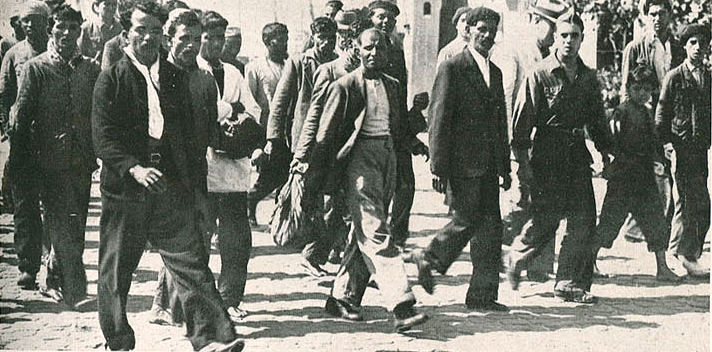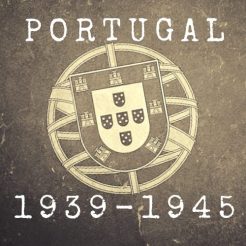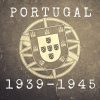
Manaar's crew members arriving in Lisbon
(Photo: Magazine "A Ilustração", 16 September 1939)
Carvalho Araújo
(Portugal)
Captain:
Type: Mixed Steamer
Tonnage: 4559 Ton
Owner: Empresa Insulana de Navegação
Homeport: Lisboa
Built: Belfast, 1915
Event: Rescued 16 crew members from the Manaar
The steamer "Carvalho Araújo" was returning to Lisbon when, at three o'clock in the morning of September 7, 1939, the officer on duty spotted on the horizon a red very light deviating the ship from its route.
Shortly afterwards they found a lifeboat with 16 men aboard, all Indians, crewmembers of the British cargo ship "Manaar", sunk hours before by the submarine U-38. The machines were stopped and the stairs lowered to allow them to climb aboard. Despite the early hours there were several passengers who woke up following the rescue operation.
The whaler was abandoned, but as the castaways ensured the existence of other lifeboats in the vicinity, the commander of the Portuguese ship made some detours in order to find them. Unsuccessfully.
The men received hot food and were given a place to sleep. On the afternoon of the same day the "Carvalho Araújo" entered the Tagus river, delivering the rescued men to the proper authorities. Three were injured being treated first on board by Dr. Alberto MacBride, who had been a physician with the Portuguese Expeditionary Corps during World War I in Flanders, and two of them, Allie Hissain and SR Abass, ended in the English Hospital in Lisbon with injuries caused by shrapnel.
According to the newspaper “Diário de Lisboa” these were the first wounded of World War II treated in Portuguese territory and were also the first castaways collected by a Portuguese ship during the conflict. They were not, although, the first ones to arrive in Lisbon. The day before the Tagus had witnessed the arrival of the Norwegian "Eidanger" with survivors from the “Bosnia”, sunk off the coast, and hours before the arrival of "Carvalho Araújo", around 11 o'clock in the morning, the Dutch freighter "Mars" had also entered port with other 30 "Manaar" survivors, including the captain and the radio operator who would be distinguished by his action during the confrontation with the submarine.
Another 17 crew members were saved by the Italian merchant "Castelbianco" and left in another port.
Of the seventy crewmen seven died and 63 were saved.
The sinking of the "Manaar"
The Portuguese newspapers of the day report an uneven combat that at one point involved four German submarines firing simultaneously on the "Manaar", but what actually happened - according to the official reports - is far from having been so epic.
At September 6 the commander of the "Manaar" had spotted the tower of the U-38 on the port side, after a night sailing on zig-zags. The U-boat was on a converging route and 70 to 75 miles west of Cape da Roca cannon fire started.
The freighter's crew was ready when the U-38 started the attack, but it was useless. One of the shells fired hit the bridge by port-side, destroying the radio equipment, preventing the attack from being reported. The British gunners had a newly installed cannon, but the only shot they made landed about a third of the distance separating the two vessels, showing it was not worth insisting.
Six shots hit several points on the ship in succession, and the commander gave the order to abandon it. As they descended to No. 4 lifeboat, one bomb exploded near them killing two men and making the other sixteen, already on board to move off. They would be ones saved by Carvalho Araújo.
The commander, some officers and several crew of British and Indian origin embarked in No. 3 whaler. Forgotten on bord was initially the communications officer Turner who tried to use a resource radio to send the message that they were being attacked. When he appeared on deck he was helping Abdoul Nobie who was wounded. The commander, already in the water tried to rescue them, but could not get close enough.
As the two whale boats were still on the bridge and Turner and another unidentified sailor tried to lower them. First the starboard one, but a malfunction sent the vessel crashing into the water and it was partially submerged.
They went to the other, but when it was near the water it was struck by the explosion of a torpedo fired from the U-boat. The impact destroyed the liferaft, killed the sailor and swept the deck firing Turner and Nobie to the other side of the ship.
When they returned, they found that the first whaling boat, although flooded, was still floating and attached to the ship. They managed to get down to it and cut the cables, but a new torpedo exploded, throwing wreckage over them. They would later be picked up by the commander, when Nobie due to the wounds was inside the lifeboat being "towed" by Turner swimming away from the sinking ship.
For his acts Turner would receive the Empire Gallantry Medal, being one of the first men of the merchant navy to be distinguished with this award.
In total there were four whaling boats able to move away from Manaar. No. 4 was picked by the “Carvalho Araújo”, while No 3 was collected by the Mars, The other two were found by the Italians "Castelbianco" - who left the shipwrecked in Gibraltar - and by the “Traviata” who left them in Cardiff, UK.
C. G.
Manaar
(Great Britain)
Captain: Campell Shaw
Type: Steam merchant
Tonnage: 7,242 Ton
Owner: T&J Brokelbank, Ldt
Homeport: Liverpool
Built: GB, 1917
Fate: Torpedoed on the 06/09/1939 by U-38
Resources:
- Archives/Arquivos: Arquivos Nacionais Torre do Tombo (PT); National Archives UK, Kew (GB); Arquivo Histórico da Marinha (PT); Arquivo Histórico do MNE (PT); Hemeroteca de Lisboa (PT);
- Sites: uboat.net; wreksite.eu;
- Books: Shipping Company Losses of the second World War, Ian M. Malcolm;

